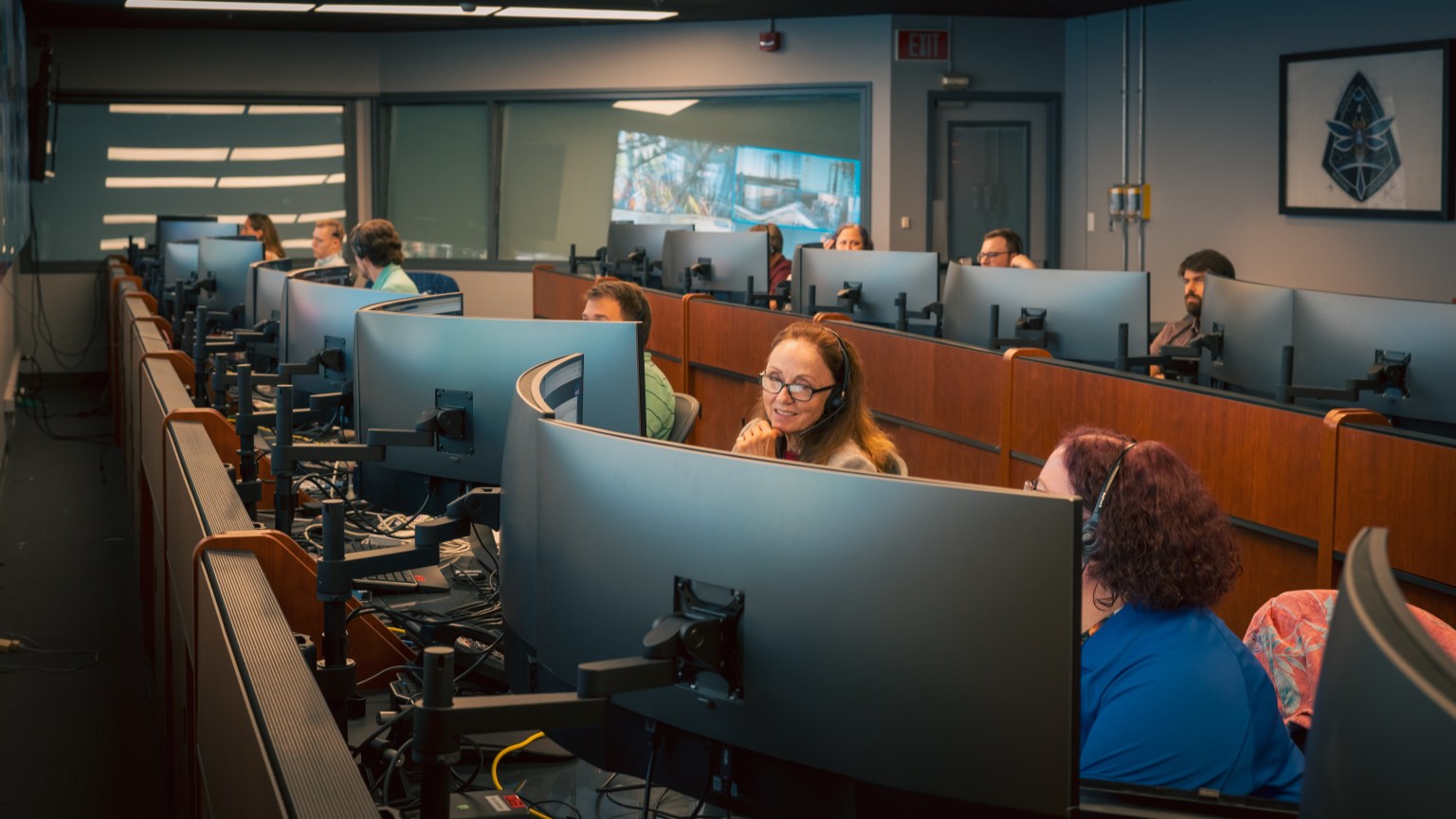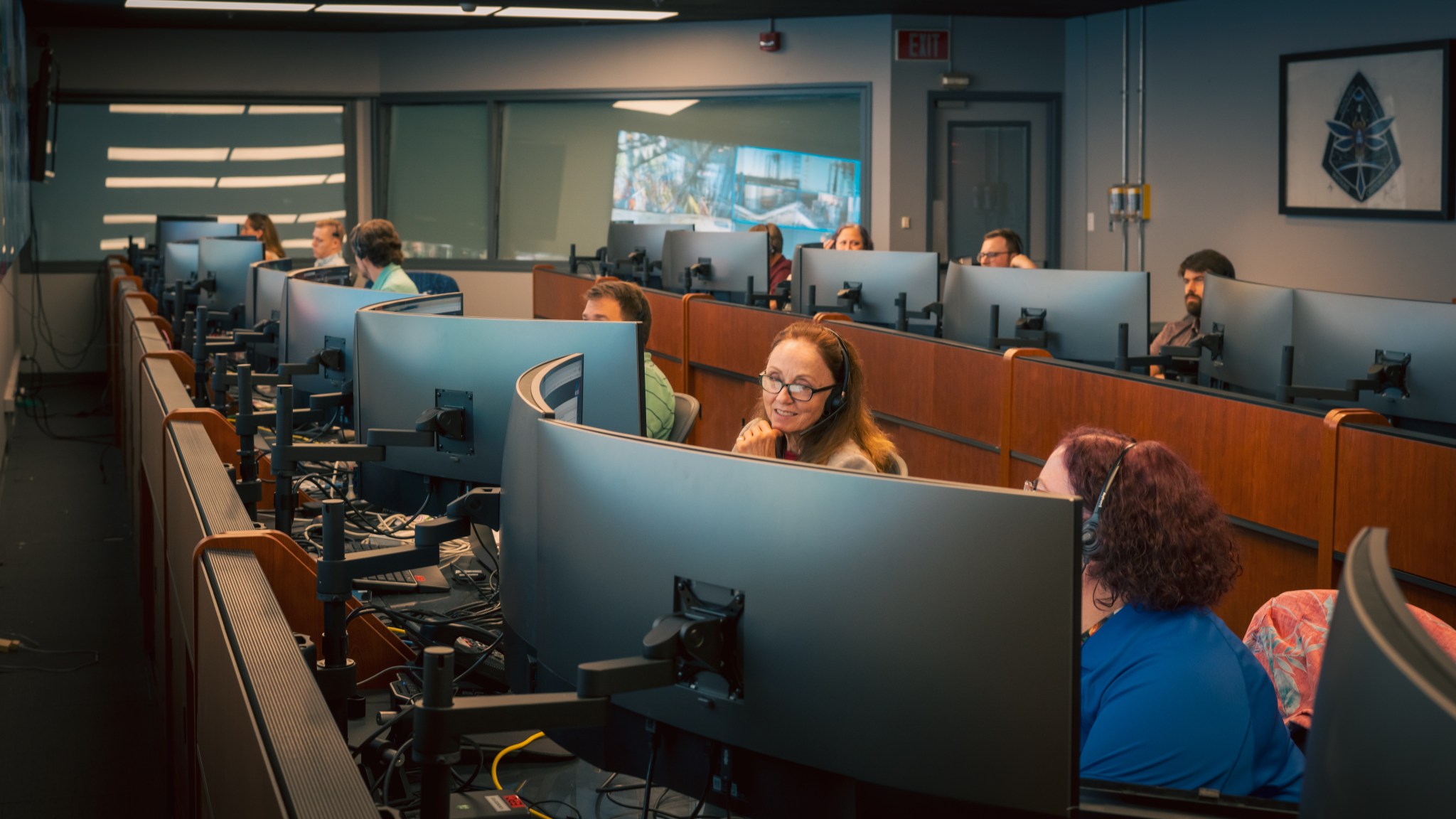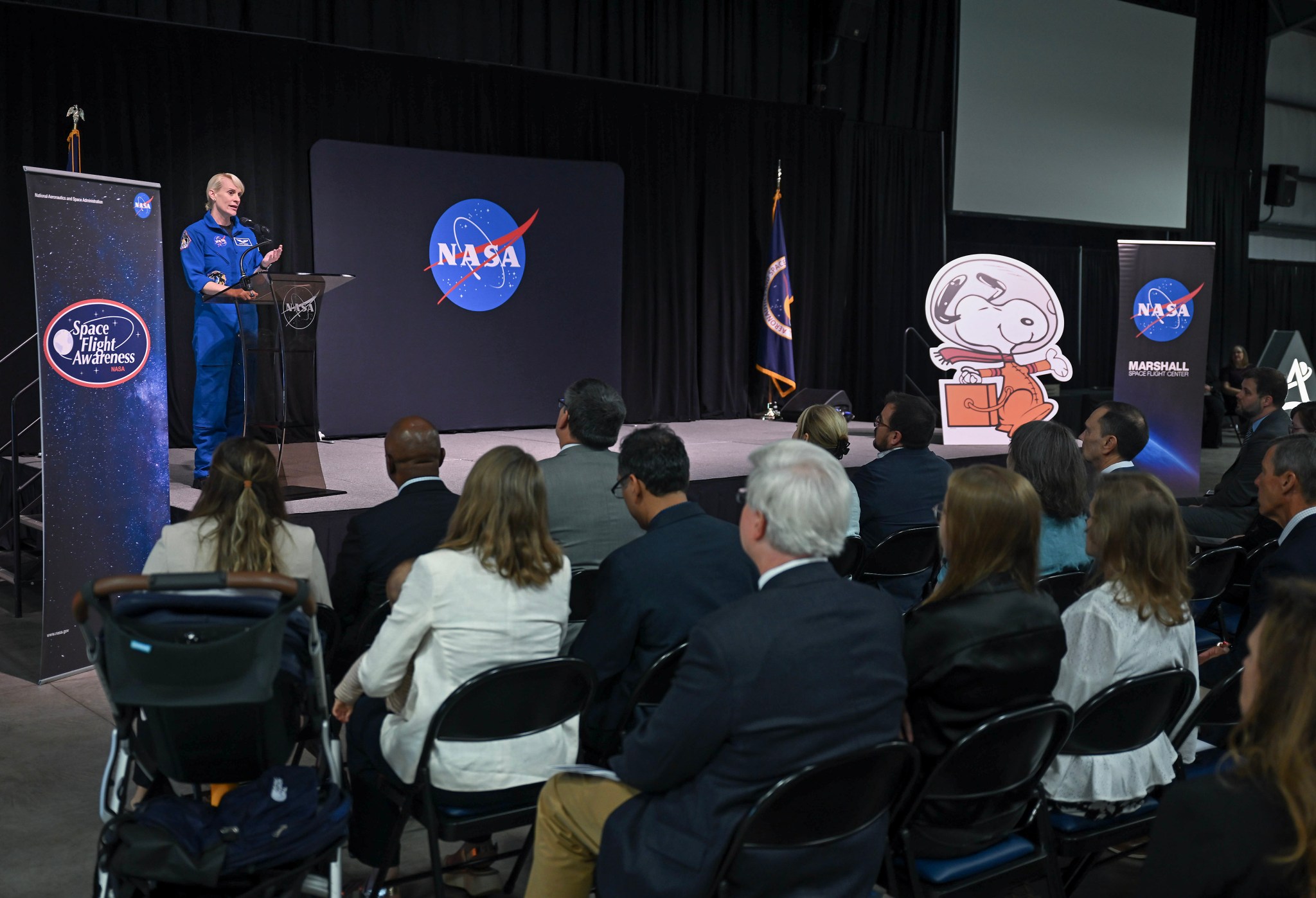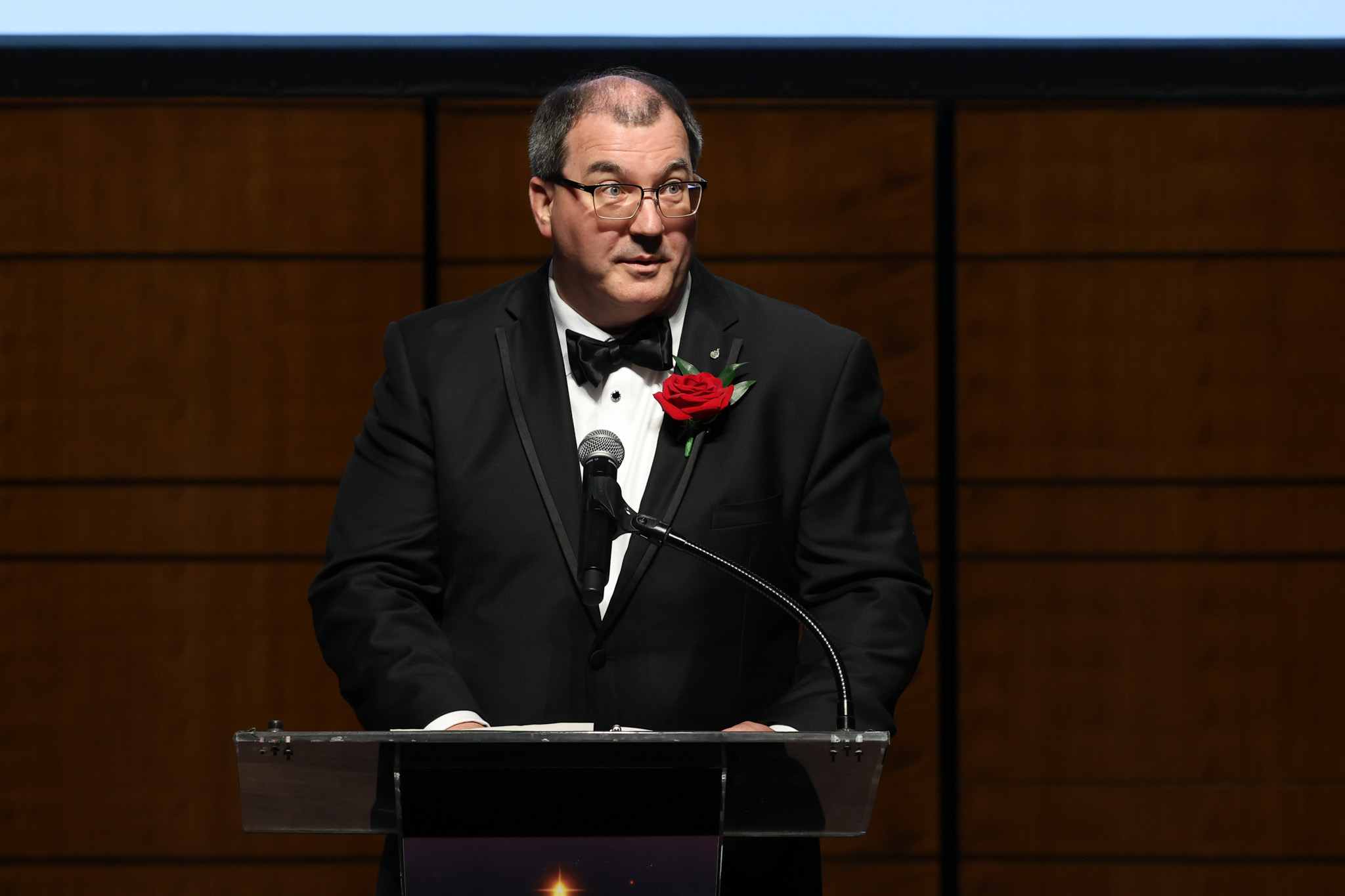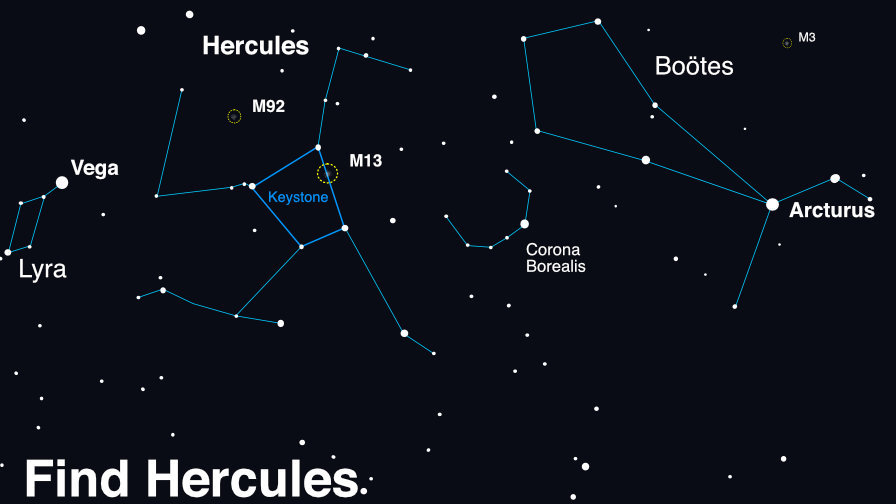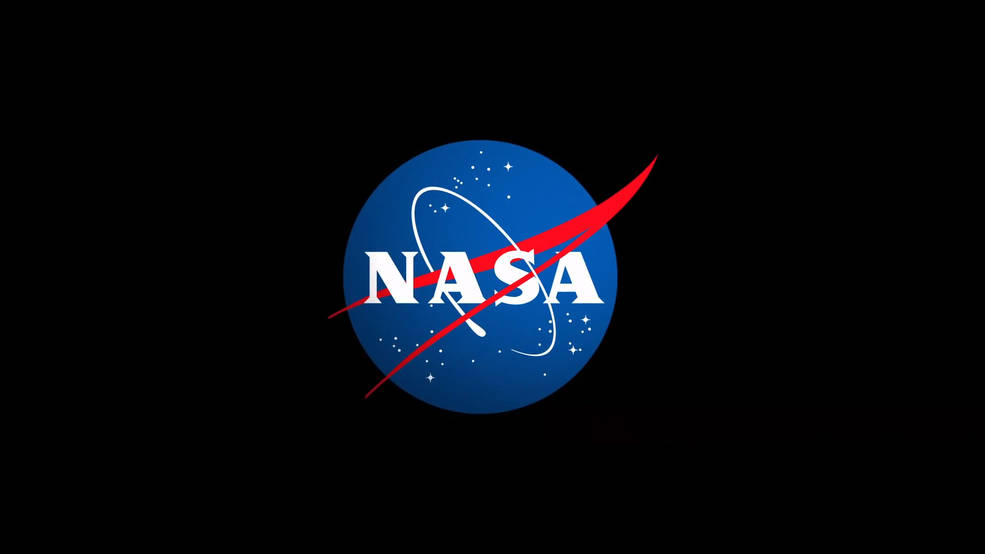Shining Stars: Marshall Teams Support Successful Crew Flight Test
By Wayne Smith
From preparing for flight readiness, to providing day-of-launch support, to delivering a critical piece of replacement hardware, NASA’s Marshall Space Flight Center played an integral role in the agency’s crew flight test to the International Space Station.
The Starliner spacecraft – NASA’s Boeing crew flight test (CFT) powered by a United Launch Alliance (ULA) Atlas V rocket – successfully launched June 5 from Cape Canaveral Space Force Station. The flight test carried NASA astronauts Butch Wilmore and Suni Williams to the space station to test the spacecraft and its subsystems before NASA certifies the transportation system for rotational missions to the orbiting laboratory for the agency’s Commercial Crew Program.
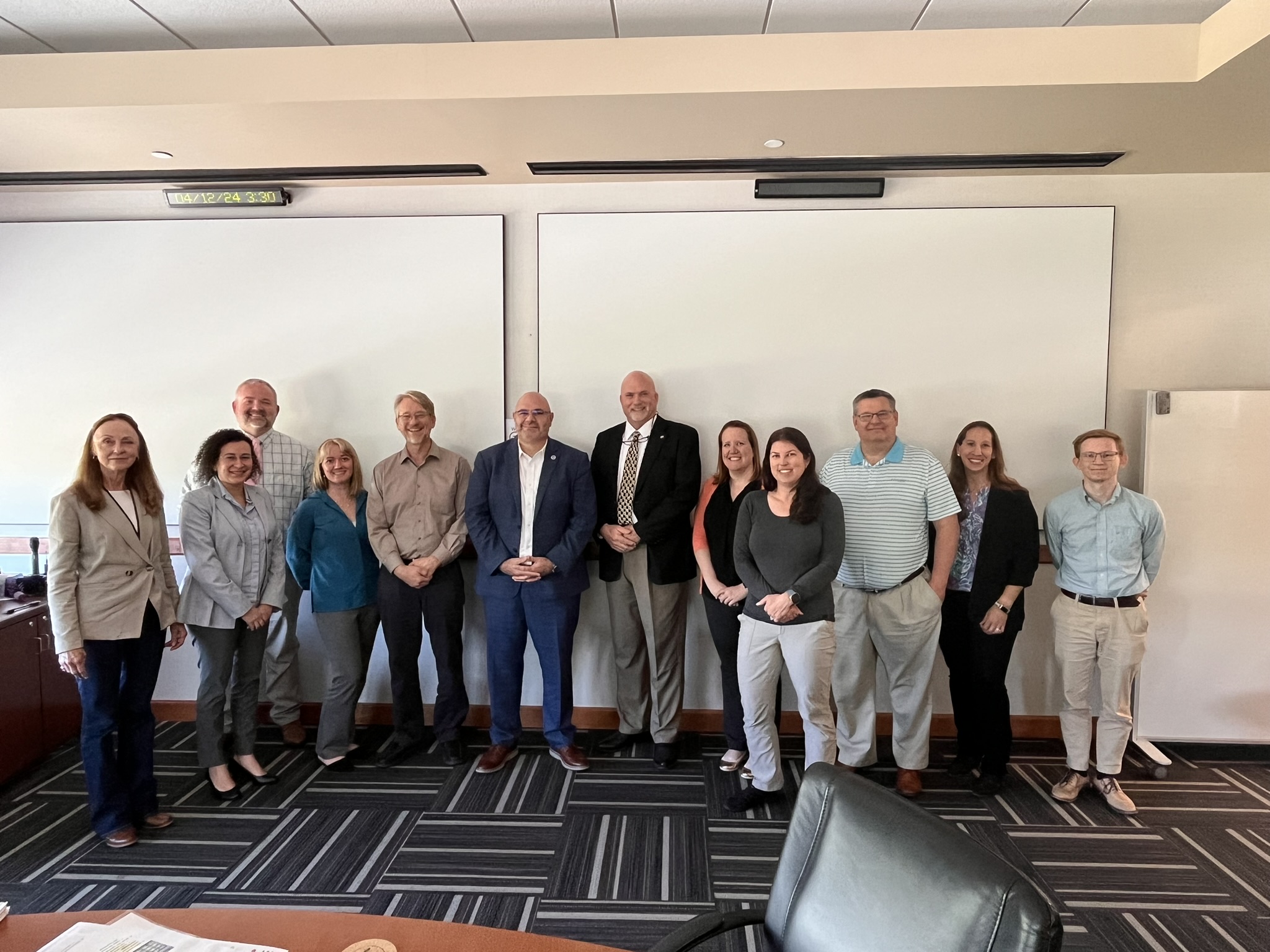
The Boeing Starliner spacecraft successfully docked to the space station June 6. NASA and Boeing teams set a return date of no earlier than June 18 for the crew flight test. The additional time in orbit will allow the space station crews to perform a spacewalk June 13, while engineers complete Starliner systems checkouts. Coverage of the spacewalk begins at 5:30 a.m. on NASA TV.
“It was incredible to witness yet another historic moment in this new era of space exploration,” said Marshall Director Joseph Pelfrey. “I am immensely proud of our Marshall team for providing the critical support needed to ensure this test flight is as safe as possible. This is just one example of how Marshall is utilizing our capabilities through strategic partnerships to expand space exploration for all humankind.”
Launch Support
Marshall’s role within the Commercial Crew Program, or CCP, is to support certification that the spacecraft and launch vehicle are ready for launch. The support team performs engineering expertise, particularly for propulsion, as well as program management, safety and mission assurance, and spacecraft support. These efforts ultimately lead up to day-of launch support from the Marshall’s Huntsville Operations Support Center (HOSC).
Eighteen Marshall team members supported the launch from inside the HOSC. The team’s primary focus was ensuring the cryo-tanking of the liquid propellants and pressurants on the Centaur and the Atlas V booster went as planned. That included monitoring the replacement self-regulating vent valve (SRV), since the valve it replaced caused the launch scrub on the first attempt.
“The replacement SRV performed perfectly after liquid oxygen load into the Centaur tank,” said David Gwaltney, CCP interim Launch Vehicle Systems Office deputy manager. “The other team members ensured the pre-launch testing for the thrust vector control and the engine cooldown purges in preparation for launch were proceeding properly. Everyone was extremely happy when the launch successfully occurred on the third attempt.”
Understandably, the HOSC is always a hive of activity on launch day, resulting in a sense of pride and accomplishment for the support team for their contributions toward successful NASA missions. However, the crew flight test of the Starliner was different.
“Each and every Commercial Crew Program mission is special in its own way, especially as we continue to forge a new era of spaceflight while working with commercial partners,” said Maggie Freeman, a program analyst supporting the Launch Vehicle Systems Office within CCP at Marshall. “The crew flight test launch is particularly special to us because it is the first time we have crew aboard the Atlas V on a CCP mission. We were extremely excited to support launch and watch them safely board the International Space Station.”
Critical Hardware Delivery
Marshall also used the mission to deliver hardware to the space station – a replacement for the Urine Processor Pump Control Processor Assembly (PCPA). A malfunctioning pump necessitated an expedited delivery, NASA officials said June 7, requiring a cargo change for the mission. The PCPA converts the crew’s urine into drinkable water.
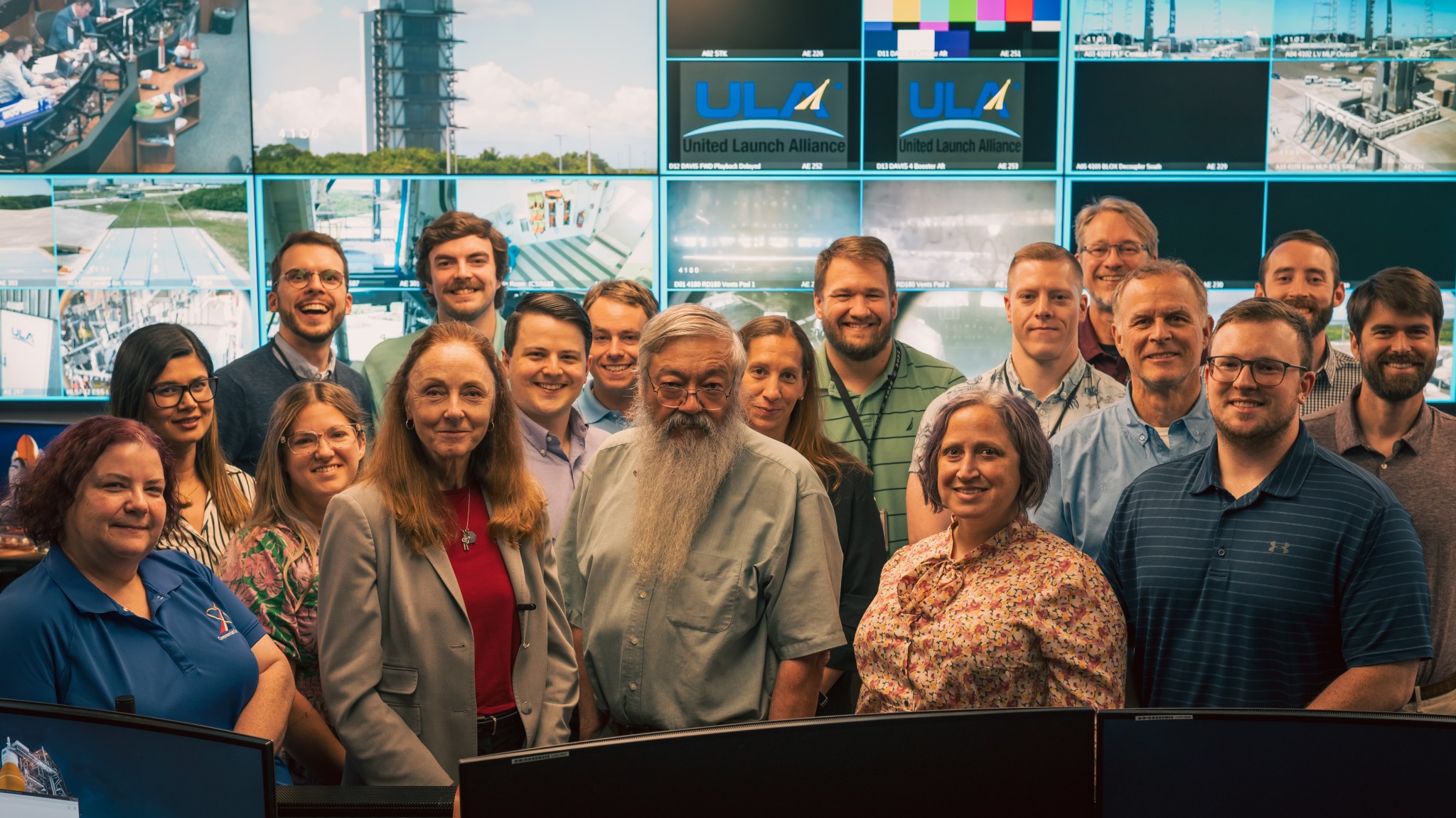
“This component is critical for space station operations and CFT was the first available mission providing an opportunity for the replacement to be delivered,” Freeman said. “Due to the PCPA being a large piece of hardware, the ISS, Boeing, and CCP teams assessed the cargo swap requirements and exercised tremendous agility in performing a rapid turnaround to ensure that ISS operations would be maintained.”
Pre-Flight Test Readiness Review
The launch would not have happened without the certification efforts supported by the Marshall CCP team. The first Marshall Center Director CFT Pre-Flight Test Readiness Review was successfully completed in April. After the initial launch attempt May 6, the integrated Boeing, ULA, and CCP teams worked diligently to ensure crew safety remained the top priority. A second round of test readiness was scheduled, with the Marshall CCP team conducting a Marshall Center Director CFT delta pre-flight test readiness review in late May.
For Starliner, the Marshall team’s primary focus was on the certification of the spacecraft’s thrusters, which are the propulsion systems used for translational and rotational control of the spacecraft while on-orbit. The thrusters are essential to mission success, ensuring the spacecraft can get from its initial insertion orbit to the space station and then back to Earth with precisely controlled burns.
Boeing contracted with NASA to use the ULA Atlas V rocket to launch Starliner into orbit. Marshall’s Launch Vehicle Propulsion team evaluated the propulsion systems for the rocket to certify they were ready to launch astronauts to the space station.
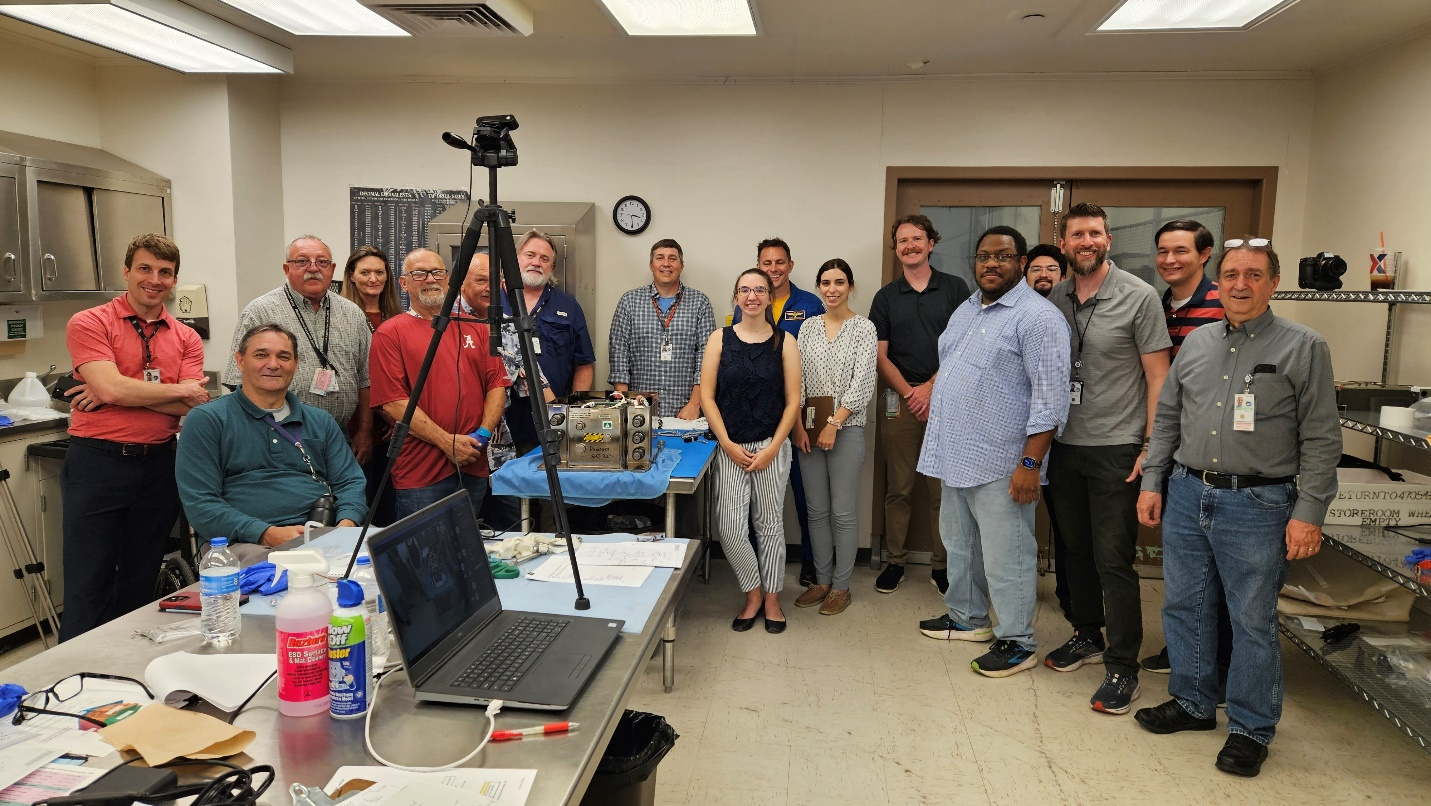
“This includes following any build issues, evaluating any changes to the vehicles, and working with our partners to ensure that the launch vehicle is ready to fly,” said Miranda Holton, CCP Launch Vehicle Propulsion Systems manager.
The HOSC provides engineering and mission operations support for the space station, the Commercial Crew Program, and Artemis missions, as well as science and technology demonstration missions. The Payload Operations Integration Center within HOSC operates, plans, and coordinates the science experiments onboard the space station 365 days a year, 24 hours a day.
Smith, a Media Fusion employee and the Marshall Star editor, supports the Marshall Office of Communications.
Silver Snoopy Awards Presented to 17 Marshall Team Members
By Jessica Barnett
Seventeen team members at NASA’s Marshall Space Flight Center joined an elite group within the agency’s ranks June 11 as they accepted an award that’s granted to less than 1% of NASA’s workforce: the Silver Snoopy.
An astronaut presents the award each year to NASA employees and contractors who have gone above and beyond in contributing to the human spaceflight program. It is a symbol of the intent and spirit of Space Flight Awareness and includes a sterling silver Snoopy lapel pin that has flown in space, along with a certificate of appreciation and a commendation letter for the employee, both signed by the astronaut.
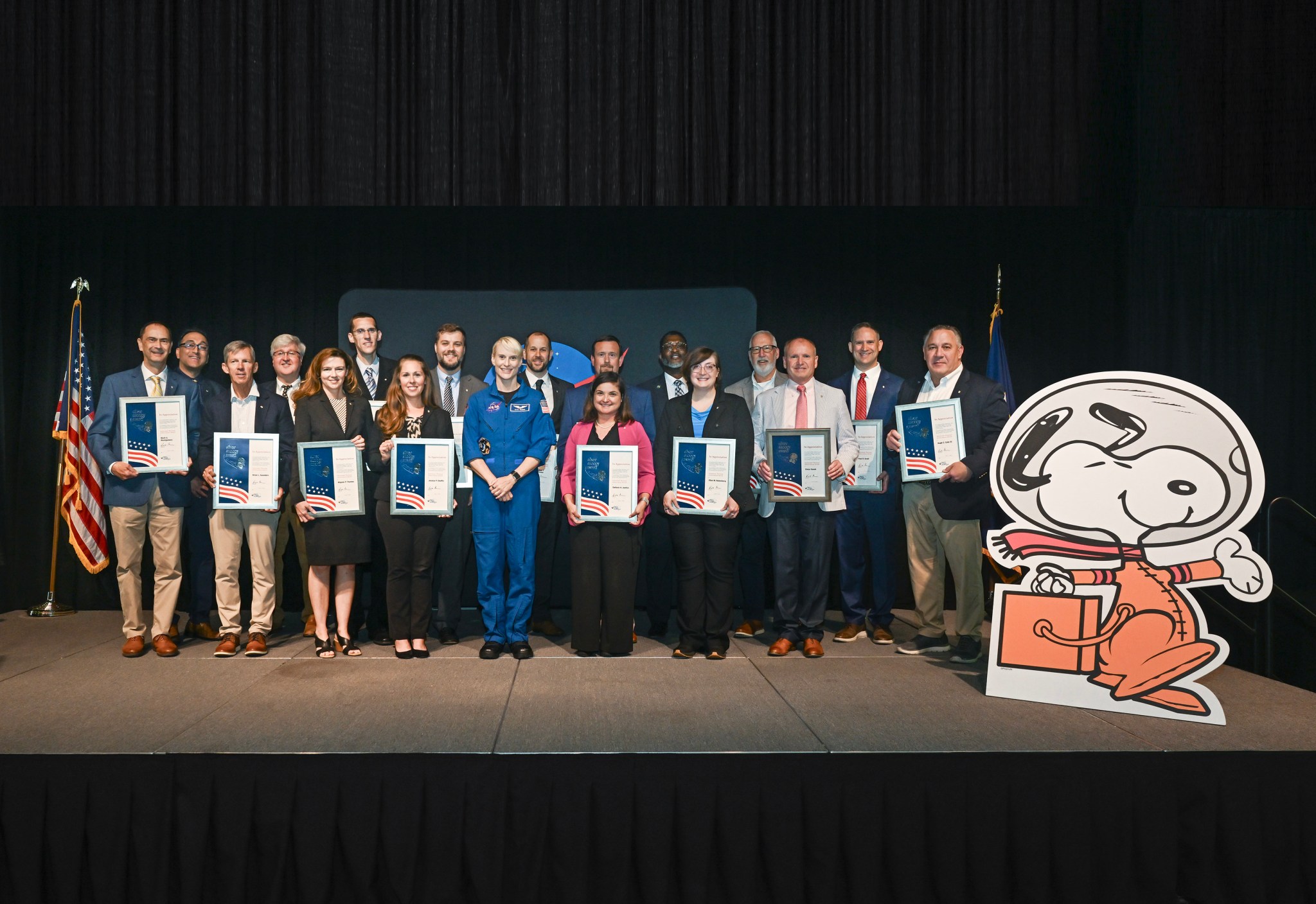
“One of my favorite parts about my job is getting to share and celebrate the accomplishments of the best that NASA has to offer, and helping to give out the Silver Snoopy awards is just that opportunity,” said Larry Leopard, who serves as associate director, technical, at Marshall and joined NASA astronaut Kate Rubins to present the awards. “These employees embody the More to Marshall slogan – words that signify growth, ambition, and continuous improvement. They’re leaders in cultivating a mindset where every one of us is encouraged to think differently, act decisively, and innovate relentlessly.”
“When we are doing highly dangerous activities, like getting on a rocket to the International Space Station or developing programs for Moon to Mars, we rely on everyone in NASA to support that end goal of exploration and safety,” Rubins said. “Our mission success is in their hands, and this is our way of saying thank you for everything they do.”
The following team members were honored during the ceremony in Activities Building 4316:
- Brad Addona, Engineering Directorate
- Christopher Buckley, Human Exploration Development and Operations Office
- Jonathan Burkholder, Engineering Directorate
- Trey Cate, Office of Strategic Analysis and Communications
- Jessica Chaffin, Engineering Directorate
- Michael Fiske, Jacobs/ESSCA, Science and Technology Office
- Paul Gradl, Engineering Directorate
- Stefanie Justice, Engineering Directorate
- Joseph McCollister, Space Launch System Program
- Manish Mehta, Engineering Directorate
- Mark Montgomery, Jacobs/ESSCA, Engineering Directorate
- Ellen Rabenberg, Engineering Directorate
- Bill Sadowski, Jacobs/ESSCA, Engineering Directorate
- Brian Saunders, L3Harris
- Stacey Steele, Human Exploration Development and Operations Office
- Mignon Thames, Human Landing System Program
- Vince Vanek, Office of the General Counsel
The Silver Snoopy pins awarded flew on NASA’s SpaceX Cargo Resupply Mission-9. The Silver Snoopy award is one of eight awards presented annually by Space Flight Awareness. Additional information, including eligibility criteria, can be found here.
Barnett, a Media Fusion employee, supports the Marshall Office of Communications.
Marshall Engineer Kurt Polzin Receives AIAA Honors Award
By Daniel Boyette
Advanced space nuclear propulsion systems are critical to NASA’s Moon to Mars vision. On May 15, one of the individuals at the forefront of those future exploration efforts was honored for his contributions.
Kurt Polzin, chief engineer for the Space Nuclear Propulsion Office at NASA’s Marshall Space Flight Center, received the American Institute of Aeronautics and Astronautics (AIAA) Engineer of the Year award during its awards gala at the John F. Kennedy Center for Performing Arts in Washington.
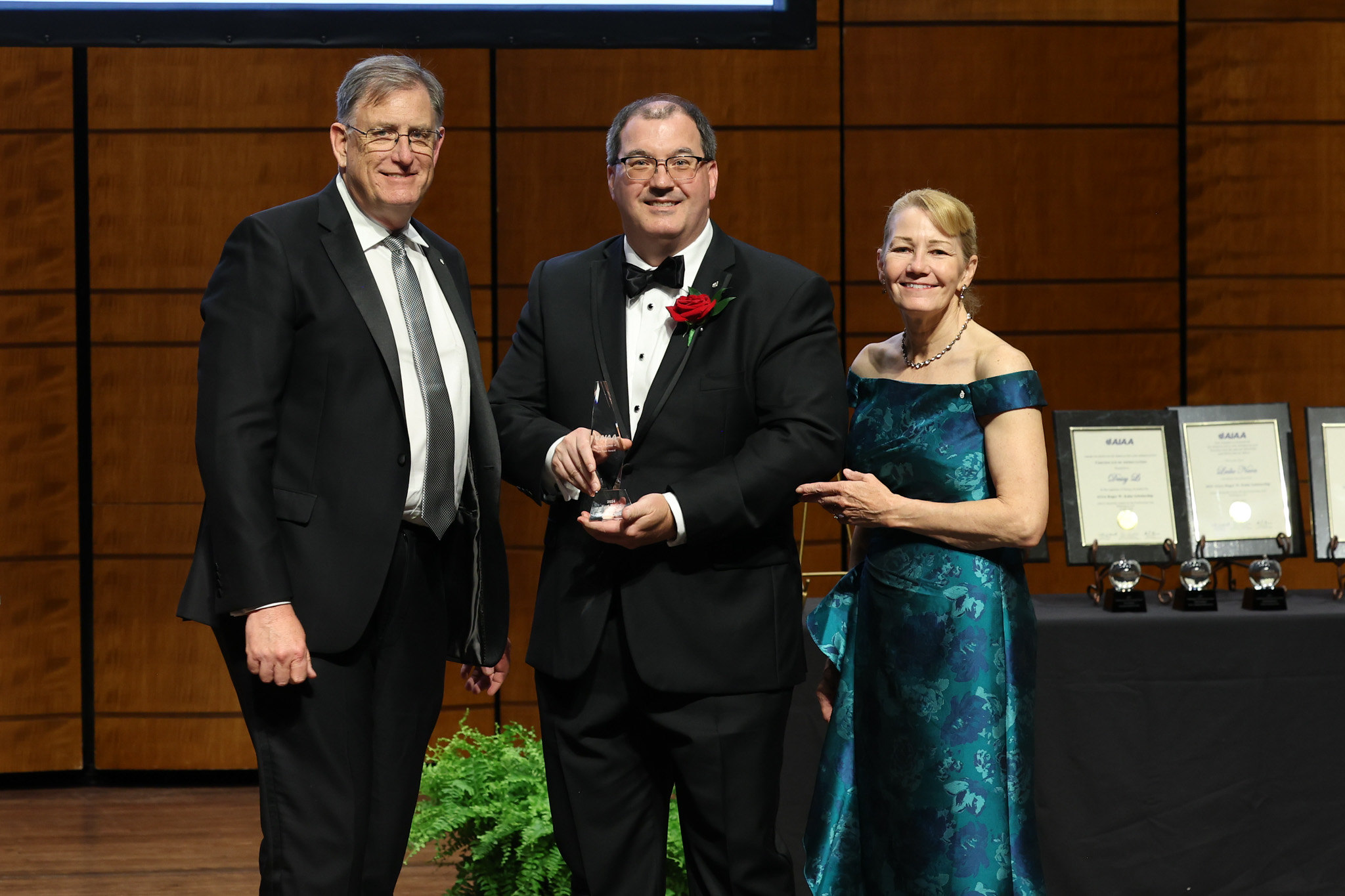
“The use of nuclear technologies will become increasingly important as the nation returns humans to the Moon and then goes onward to Mars, and realizing these benefits will take not just a NASA effort, but a national effort,” Polzin told the audience. “It’s a privilege to work with and lead some of the best people in government, industry, and academia, bringing the nation closer to a future where nuclear power and propulsion technologies in space become common. What we do today will enable science missions and human exploration beyond anything humans have ever achieved for current and future generations of scientists and explorers.”
Since 2021, Polzin has overseen NASA’s nuclear propulsion technology development and maturation efforts. He’s also the chief engineer for the agency’s partnership with the Defense Advanced Research Projects Agency (DARPA) on the Demonstration Rocket for Agile Cislunar Operations (DRACO) program, which aims to demonstrate a nuclear thermal propulsion system in space as soon as 2027.
“To live and work on the Moon, we’ll need a power and transportation infrastructure, and nuclear space systems offer key capability benefits over current state-of-art,” said Anthony Calomino, NASA’s Space Nuclear Technologies portfolio manager under the agency’s Space Technology Mission Directorate. “Kurt’s leadership in this journey to mature our space nuclear propulsion technology is what will get us there. We are proud to see him recognized as AIAA’s Engineer of the Year.”
Q&A with Kurt Polzin
Q: What were your emotions when you went to accept the award?
Polzin: The list of those who have previously received this award is long and illustrious, so it is an honor to be nominated for it. Being selected by my peers as the recipient was a very thrilling and humbling experience. Receiving it at the Kennedy Center, in the presence of many aerospace leaders and my wife in the audience, made it a truly unique and memorable experience.
Q: You’ve previously stated that individual awards are really team awards. How has being a member of a team helped you to be successful?
Polzin: Realizing big ideas requires the contributions and expertise of many people across a range of skills and disciplines, and using nuclear technologies in space is about the most significant idea there is. The team we assembled and continue to grow consists of true experts in their disciplines. I constantly rely on them to ensure we are asking the right questions and making investments to advance our capabilities and position the nation for success.
Q: What excites you most about the future of space exploration?
Polzin: In my lifetime, we have never been closer to fully realizing the benefits of nuclear power and propulsion in space. We now have the potential to cross the threshold and open a new era where nuclear technologies will bring about truly transformational change in how we approach all aspects of space exploration.
Before his current role, Polzin was the Space Systems Team lead in Marshall’s Advanced Concepts Office. He joined NASA in 2004 as a propulsion research engineer.
Polzin has a doctorate and a master’s in Mechanical and Aerospace Engineering from Princeton University in New Jersey and a bachelor’s in Aeronautical and Astronautical Engineering from Ohio State University in Columbus.
He authored or co-authored over 140 publications, including a recently published monograph, and he holds six U.S. patents. He has also been an adjunct professor at the University of Alabama in Huntsville for many years, teaching graduate-level courses in physics and engineering.
Polzin’s other honors include the AIAA Sustained Service Award, the AIAA Greater Huntsville Section’s Martin Schilling Outstanding Service and Earl Pearce Professional of the Year, and multiple NASA Patent, Special Service, and Group Achievement awards. He is an associate fellow of AIAA and a senior member of the Institute of Electrical and Electronics Engineers.
NASA’s Space Technology Mission Directorate funds the SNP Office.
With nearly 30,000 individual members from 91 countries and 95 corporate members, AIAA is the world’s largest technical society dedicated to the global aerospace profession.
Learn more about Space Nuclear Propulsion.
Boyette, a Media Fusion employee, supports the Space Nuclear Propulsion Office and Marshall’s Office of Strategic Analysis & Communications.
NASA Announces Student Launch Winners
NASA presented the 2024 Student Launch challenge award winners in a virtual award ceremony June 7. Awards were presented to students from colleges, universities, high schools, middle schools, and informal education groups who designed, built, and launched high-powered, amateur rockets and scientific payloads. In addition to the overall winners, other awards were presented for safety, vehicle design, social media presence, STEM engagement, and more. The Student Launch challenge was held May 3 in Toney, Alabama, near the agency’s Marshall Space Flight Center. Read more about Student Launch.
Meet the Simunauts: Ohio State Students to Test Space Food Solutions for NASA
By Savannah Bullard
NASA’s Deep Space Food Challenge kicks off its final eight-week demonstration this month, and a new crew is running the show.
NASA’s partner for the Deep Space Food Challenge, the Methuselah Foundation, has teamed up with Ohio State University in Columbus to facilitate the challenge’s third and final phase. The university is employing current and former students to serve on a “Simunaut” crew to maintain and operate the food production technologies during the demonstration period.
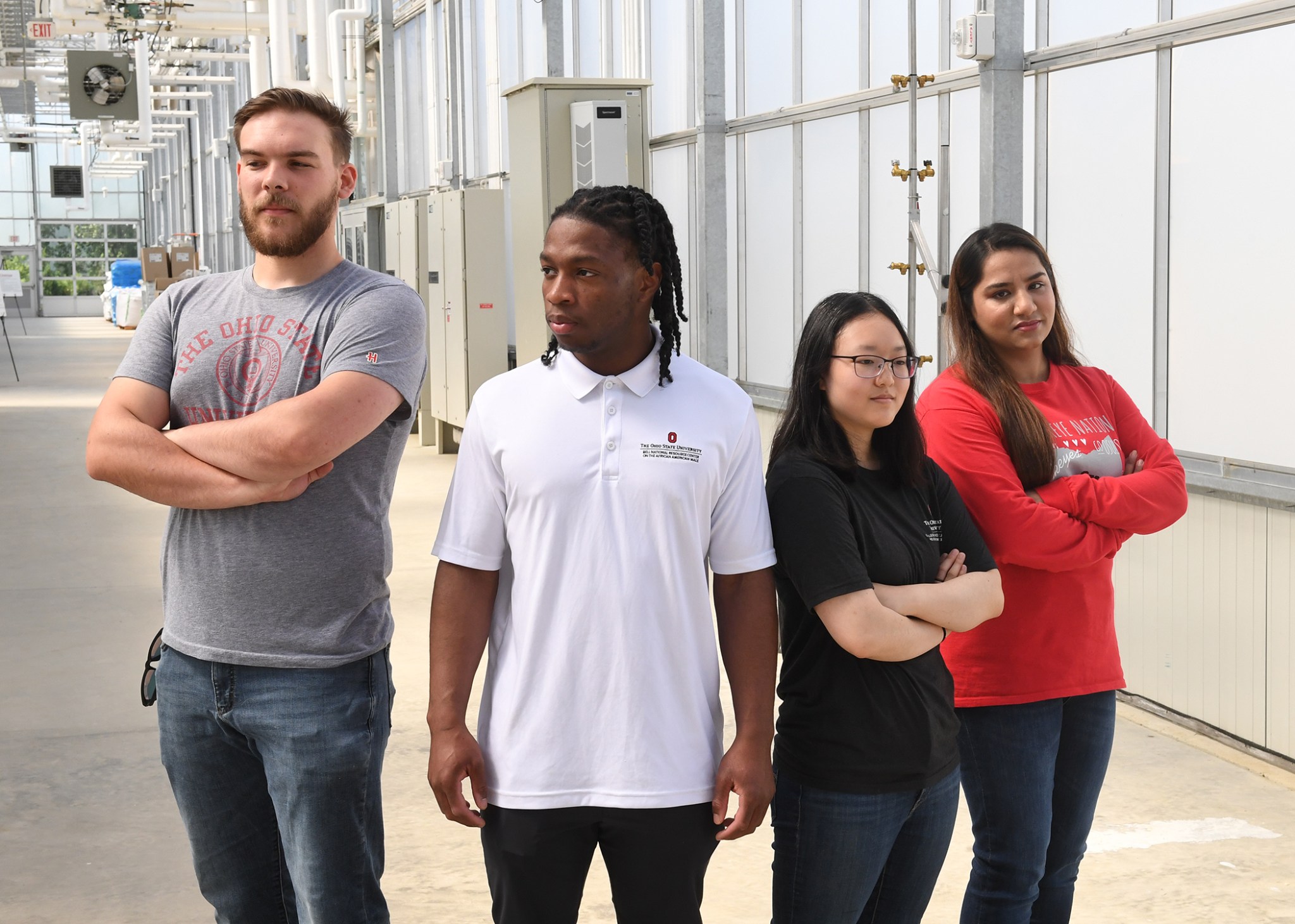
The Deep Space Food Challenge creates novel food production systems that offer safe, nutritious, and delicious food for long-duration human exploration missions while conscious of waste, resources, and labor. The challenge could also benefit humanity by helping address Earth’s food scarcity problems. In this challenge phase, NASA will offer a $1.5 million prize purse to winning U.S. teams after demonstrations are completed during an awards ceremony on August 16.
“It’s easy for a team with intimate knowledge of their food systems to operate them. This will not be the case for astronauts who potentially use these solutions on deep-space missions,” said Angela Herblet, Program Analyst for NASA’s Centennial Challenges and Challenge Manager for the Deep Space Food Challenge. “Incorporating the Simunauts will add a unique flair that will test the acceptability and ease of use of these systems.”
The demonstrations will occur inside Ohio State’s Wilbur A. Gould Food Industries Center’s Food Processing Pilot Plant until July 31. Meet the students behind the demonstrations:
Fuanyi Fobellah
Fuanyi Fobellah was a picky eater as a child. But, when he began wrestling in school, food became an essential part of his life. Now a senior majoring in food business management at Ohio State, Fobellah combines his love for space exploration with his food, nutrition, business, and innovation knowledge.
Q: How does the work you’re doing this summer fit into the overall NASA mission, and how do your contributions fit into that mission?
A: Food can easily become an overlooked aspect of space travel, but humans can only live and travel to different planets with sustainable food systems. That’s why a challenge focused on developing food systems for space travel is so vital to NASA’s mission.
Sakura Sugiyama
Sakura Sugiyama’s childhood hobbies were cooking and baking, and with two scientists as parents, the Deep Space Food Challenge piqued the interest of the recent Ohio State graduate. Sugiyama obtained her bachelor’s degree from Ohio State’s Department of Food Science and Technology and plans to work in research and development in the food industry.
Q: Why do you think this work is important for the future of civilization?
A: Food variety, sustainability, energy efficiency – all of those are issues we face here on Earth due to climate change, increasing populations, and food insecurity. I hope that solving those issues in space will also help solve those problems on Earth.
Charlie Frick
A fifth-year student studying animal sciences, Charlie Frick, found his passion while growing up on his family’s farm. While finishing his degree, he hopes the Deep Space Food Challenge will allow him to use his agriculture and animal science knowledge to support space technology, nutrition, and food regeneration.
Q: Now that you’re familiar with NASA’s public prize competitions, how do you think they benefit the future of human space exploration?
A: These challenges help a lot because sometimes you need that third person who doesn’t have that background but can come up with something to help. These challenges are critical in helping bring about technologies that otherwise would never exist.
Mehir Un Nisa
Mehir Un Nisa is a graduate student in Ohio State’s Department of Food Science and Technology. As a kid who dreamed about working at NASA, Un Nisa is using her expertise in food science to make that dream a reality and get a foot in the door of the agency’s food and nutrition programs.
Q: How does it feel to work alongside NASA on a project like this?
A: Working with NASA empowers me as a researcher, and it makes me feel good that food science has a part in that big name. It’s a dream come true for me.
The Deep Space Food Challenge, a NASA Centennial Challenge, is a coordinated effort between NASA and CSA (Canadian Space Agency). Subject matter experts at Johnson Space Center and Kennedy Space Center support the competition. NASA’s Centennial Challenges are part of the Prizes, Challenges, and Crowdsourcing program within NASA’s Space Technology Mission Directorate and managed at Marshall Space Flight Center. The Methuselah Foundation, in partnership with NASA, oversees the United States and international competitors.
Learn more about the Deep Space Food Challenge.
Bullard, an Aeyon/MTS employee, supports the Marshall Office of Communications.
NASA, Global Astronomers Await Rare Nova Explosion
By Rick Smith
Around the world this summer, professional and amateur astronomers alike will be fixed on one small constellation deep in the night sky. But it’s not the seven stars of Corona Borealis, the “Northern Crown,” that have sparked such fascination.
It’s a dark spot among them where an impending nova event – so bright it will be visible on Earth with the naked eye – is poised to occur.
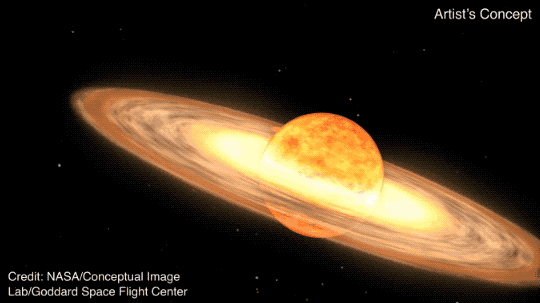
“It’s a once-in-a-lifetime event that will create a lot of new astronomers out there, giving young people a cosmic event they can observe for themselves, ask their own questions, and collect their own data,” said Dr. Rebekah Hounsell, an assistant research scientist specializing in nova events at NASA’s Goddard Space Flight Center. “It’ll fuel the next generation of scientists.”
T Coronae Borealis, dubbed the “Blaze Star” and known to astronomers simply as “T CrB,” is a binary system nestled in the Northern Crown some 3,000 light-years from Earth. The system is comprised of a white dwarf – an Earth-sized remnant of a dead star with a mass comparable to that of our Sun – and an ancient red giant slowly being stripped of hydrogen by the relentless gravitational pull of its hungry neighbor.
The hydrogen from the red giant accretes on the surface of the white dwarf, causing a buildup of pressure and heat. Eventually, it triggers a thermonuclear explosion big enough to blast away that accreted material. For T CrB, that event appears to reoccur, on average, every 80 years.
Don’t confuse a nova with a supernova, a final, titanic explosion that destroys some dying stars, Hounsell said. In a nova event, the dwarf star remains intact, sending the accumulated material hurtling into space in a blinding flash. The cycle typically repeats itself over time, a process which can carry on for tens or hundreds of thousands of years.
“There are a few recurrent novae with very short cycles, but typically, we don’t often see a repeated outburst in a human lifetime, and rarely one so relatively close to our own system,” Hounsell said. “It’s incredibly exciting to have this front-row seat.”
The first recorded sighting of the T CrB nova was more than 800 years ago, in autumn 1217, when a man named Burchard, abbot of Ursberg, Germany, noted his observance of “a faint star that for a time shone with great light.”
The T CrB nova was last seen from Earth in 1946. Its behavior over the past decade appears strikingly similar to observed behavior in a similar timeframe leading up to the 1946 eruption. If the pattern continues, some researchers say, the nova event could occur by September 2024.
What should stargazers look for? The Northern Crown is a horseshoe-shaped curve of stars west of the Hercules constellation, ideally spotted on clear nights. It can be identified by locating the two brightest stars in the Northern Hemisphere – Arcturus and Vega – and tracking a straight line from one to the other, which will lead skywatchers to Hercules and the Corona Borealis.
The outburst will be brief. Once it erupts, it will be visible to the naked eye for a little less than a week – but Hounsell is confident it will be quite a sight to see.
Dr. Elizabeth Hays, chief of Goddard’s Astroparticle Physics Laboratory, agreed. She said part of the fun in preparing to observe the event is seeing the enthusiasm among amateur stargazers, whose passion for extreme space phenomena has helped sustain a long and mutually rewarding partnership with NASA.
“Citizen scientists and space enthusiasts are always looking for those strong, bright signals that identify nova events and other phenomena,” Hays said. “Using social media and email, they’ll send out instant alerts, and the flag goes up. We’re counting on that global community interaction again with T CrB.”
Hays is the project scientist for NASA’s Fermi Gamma-ray Space Telescope, which has made gamma-ray observations from low Earth orbit since 2008. Fermi is poised to observe T CrB when the nova eruption is detected, along with other space-based missions including NASA’s James Webb Space Telescope, Neil Gehrels Swift Observatory, IXPE (Imaging X-ray Polarimetry Explorer), NuSTAR (Nuclear Spectroscopic Telescope Array), NICER (Neutron star Interior Composition Explorer), and the European Space Agency’s INTEGRAL (Extreme Universe Surveyor). Numerous ground-based radio telescopes and optical imagers, including the National Radio Astronomy Observatory’s Very Large Array in Mexico, also will take part. Collectively, the various telescopes and instruments will capture data across the visible and non-visible light spectrum.
“We’ll observe the nova event at its peak and through its decline, as the visible energy of the outburst fades,” Hounsell said. “But it’s equally critical to obtain data during the early rise to eruption – so the data collected by those avid citizen scientists on the lookout now for the nova will contribute dramatically to our findings.”
For astrophysics researchers, that promises a rare opportunity to shed new light on the structure and dynamics of recurring stellar explosions like this one.
“Typically, nova events are so faint and far away that it’s hard to clearly identify where the erupting energy is concentrated,” Hays said. “This one will be really close, with a lot of eyes on it, studying the various wavelengths and hopefully giving us data to start unlocking the structure and specific processes involved. We can’t wait to get the full picture of what’s going on.”
Some of those eyes will be very new. Gamma-ray imagers didn’t exist the last time T CrB erupted in 1946, and IXPE’s polarization capability – which identifies the organization and alignment of electromagnetic waves to determine the structure and internal processes of high-energy phenomena – is also a brand-new tool in X-ray astronomy. Combining their data could offer unprecedented insight into the lifecycles of binary systems and the waning but powerful stellar processes that fuel them.
Learn more about NASA astrophysics.
Smith, an Aeyon/MTS employee, supports the Marshall Office of Communications.
‘Super’ Star Cluster Shines in New Look from NASA’s Chandra
Westerlund 1 is the biggest and closest “super” star cluster to Earth. New data from NASA’s Chandra X-ray Observatory, in combination with other NASA telescopes, is helping astronomers delve deeper into this galactic factory where stars are vigorously being produced.
This is the first data to be publicly released from a project called the Extended Westerlund 1 and 2 Open Clusters Survey, or EWOCS, led by astronomers from the Italian National Institute of Astrophysics in Palermo. As part of EWOCS, Chandra observed Westerlund 1 for about 12 days in total.
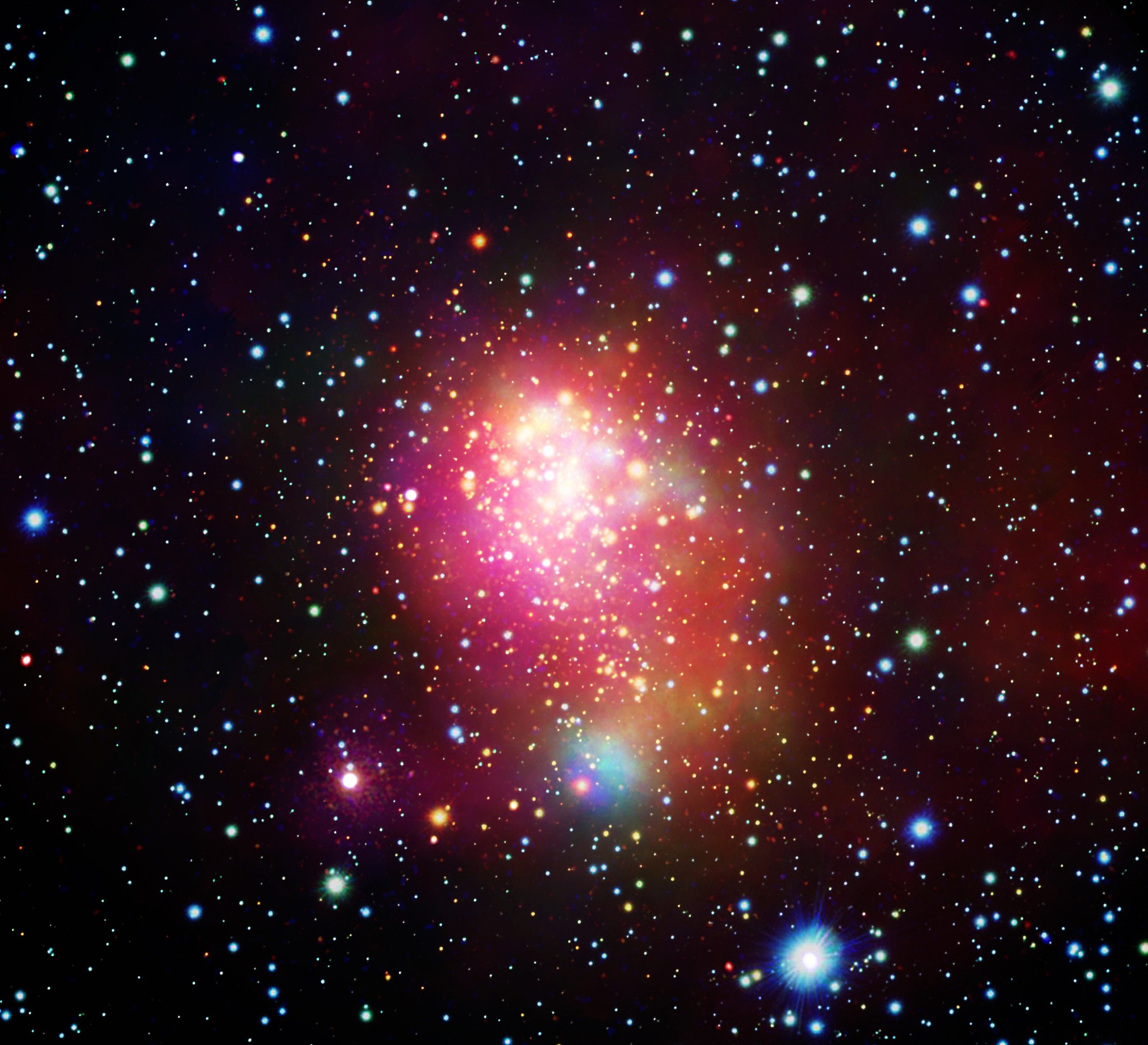
Currently, only a handful of stars form in our galaxy each year, but in the past the situation was different. The Milky Way used to produce many more stars, likely hitting its peak of churning out dozens or hundreds of stars per year about 10 billion years ago and then gradually declining ever since. Astronomers think that most of this star formation took place in massive clusters of stars, known as “super star clusters,” like Westerlund 1. These are young clusters of stars that contain more than 10,000 times the mass of the Sun. Westerlund 1 is between about 3 million and 5 million years old.
This new image shows the new deep Chandra data along with previously released data from NASA’s Hubble Space Telescope. The X-rays detected by Chandra show young stars (mostly represented as white and pink) as well as diffuse heated gas throughout the cluster (colored pink, green, and blue, in order of increasing temperatures for the gas). Many of the stars picked up by Hubble appear as yellow and blue dots.
Only a few super star clusters still exist in our galaxy, but they offer important clues about this earlier era when most of our galaxy’s stars formed. Westerlund 1 is the biggest of these remaining super star clusters in the Milky Way and contains a mass between 50,000 and 100,000 Suns. It is also the closest super star cluster to Earth at about 13,000 light-years.
These qualities make Westerlund 1 an excellent target for studying the impact of a super star cluster’s environment on the formation process of stars and planets as well as the evolution of stars over a broad range of masses.
This new deep Chandra dataset of Westerlund 1 has more than tripled the number of X-ray sources known in the cluster. Before the EWOCS project, Chandra had detected 1,721 sources in Westerlund 1. The EWOCS data found almost 6,000 X-ray sources, including fainter stars with lower masses than the Sun. This gives astronomers a new population to study.
One revelation is that 1,075 stars detected by Chandra are squeezed into the middle of Westerlund 1 within four light-years of the cluster’s center. For a sense of how crowded this is, four light-years is about the distance between the Sun and the next closest star to Earth.
The diffuse emission seen in the EWOCS data represents the first detection of a halo of hot gas surrounding the center of Westerlund 1, which astronomers think will be crucial in assessing the cluster’s formation and evolution, and giving a more precise estimate of its mass.
A paper published in the journal Astronomy and Astrophysics, led by Mario Guarcello from the Italian National Institute of Astrophysics in Palermo, discusses the survey and the first results. Follow-up papers will discuss more about the results, including detailed studies of the brightest X-ray sources. This future work will analyze other EWOCS observations, involving NASA’s James Webb Space Telescope and NICER (Neutron Star Interior Composition Explorer).
NASA’s Marshall Space Flight Center manages the Chandra program. The Smithsonian Astrophysical Observatory’s Chandra X-ray Center controls science from Cambridge Massachusetts and flight operations from Burlington, Massachusetts.
NASA Awards Contract for Safety and Mission Assurance Services
NASA has selected KBR Wyle Services LLC, of Fulton, Maryland, to provide safety and mission assurance services to the agency.
The Safety and Mission Assurance, Audits, Assessments, and Analysis (SA3) Services contract is a cost-plus-fixed-fee contract with an indefinite-delivery/indefinite-quantity provision and a maximum potential value of approximately $75.3 million. The three-year base performance period of this contract begins August 1, 2024, and is followed by a two-year option, which would end July 31, 2029.
The SA3 contract will provide safety and mission assurance services to NASA Headquarters and other NASA centers, programs, projects, and activities through the NASA Safety Center. These services include, but aren’t limited to, audit/assessment/analysis support, safety assessments and hazard analysis, reliability and maintainability analysis, risk analysis and management, supply chain data management and analytics, software safety and assurance, training and outreach, quality engineering and assurance, and information systems support.


























